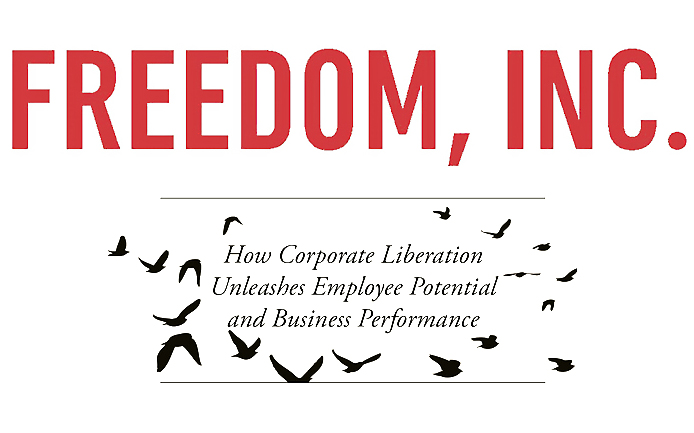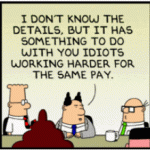 Psychologists on the impossibility of management—even for NINA puzzles
Psychologists on the impossibility of management—even for NINA puzzles
The University of Rochester psychologists Edward Deci, Richard Ryan, and their associates carried, perhaps, the most ambitious contemporary theoretical and empirical research on motivation. They argue that in order for people to be motivated an environment has to satisfy three fundamental needs of “relatedness,” “competence,” and “autonomy,” needs which are innate and universal.
For the last three decades, they studied how the social and work environments provide these nutriments or deprive people of them. One of their experimental tools was a collection of Al Hirschfeld drawings, each of which had his daughter’s name, “NINA,” hidden in it several times.
Participants in the experiment were asked to find all the NINAs in a picture, the kind of puzzle that many people find irresistible in any case. And indeed, after completing the first puzzle all the participants filled in a quick questionnaire that attested that they liked the task. Then the researcher would give the following “managerial instructions”:
- One third of the participants were instructed: “Do as well as you can, and following each puzzle I will give you feedback on how well you are doing”;
- Another third were instructed: “You should try as hard as possible because I expect you to perform up to standards on these puzzles”;
- The final third (used by experimenters as a base comparison group) were instructed: “You will be working now on more puzzles.”
The participants completed three new puzzles in a folder containing six puzzles, leaving the rest. After searching each picture, the subjects would receive “managerial feedback” from the experimenter:
- The first group of the participants got one of the following three feedbacks depending on the number of NINAs they found in each puzzle: “You did very well on that one,” “You did fairly well on that puzzle,” and “Let’s see, you did well that time”;
- The second group got exactly the same feedback, but with a “should” phrase added: “You did very well on that one, just as you should,” “You did fairly well on that puzzle, just as you should,” and “Let’s see, you did well that time, just as you should”;
- The final group of the participants all received the same feedback, regardless of how they did: “OK, now let’s go onto the next one.”
What the experimenters wanted to learn was how the type of “managerial instructions” and “managerial feedback”—autonomy-supportive for the first group versus controlling for the second, and neutral for the third—influenced participants’ willingness to freely continue the activity they all enjoyed initially. To measure that, the experimenters left the participants alone with the folder, which still contained three more puzzles; two recent popular magazines were also available in the room. Unobtrusively, the researchers observed the participants for six minutes and recorded the time they spent in voluntarily pursuing puzzle-solving. Here is the average time—out of a maximum six minutes—each group continued solving puzzles:
- The first group, which received autonomy-supportive instructions and feedback: 4:43;
- The second group, which received controlling managerial-style instructions and feedback: 3:16;
- The final group, which received neutral instructions and no feedback on performance: 2:44.
Thus, the controlling managerial style added 32 seconds on top of the base time of 2:44 that participants would have spent looking at the puzzles anyway: about a 20% addition. The autonomy-supportive managerial style though was a real game changer—it contributed 119 seconds on top of the base time: about a 73% addition.
One may object that these managerial styles of instructions and feedback were a bit “soft” and if hard money rewards were thrown in we’d get much stronger impact. The experimenters had thought of that too. And, in fact, they promised half of the participants in each group $6 once they completed the activity. The specific “managerial reward” promise depended on the group:
- The first group of participants was told: “We have received some extra money from a grant, so we will be able to pay those who do well at this activity. You will receive $6 at the end of today’s session if you do well on the puzzles”;
- The second group was told a very similar phrase but with a different ending: “We have received some extra money from a grant, so we will be able to pay those who do well at this activity. You will receive $6 at the end of today’s session if you perform up to the standards”;
- The final group of the participants was given an unconditional reward promise: “You will receive $6 at the end of the session for doing puzzles.”
Well, throwing in hard reward did change things. It made the difference in impact of the autonomy-supportive and controlling managerial styles much bigger:
- The first group—in fact, a half of this group—which received autonomy-supportive instructions, feedback, and reward promise: 3:49;
- The second group, which received controlling managerial-style instructions, feedback, and reward promise: 1:57;
- The final group, which received neutral instructions and no feedback or reward promise on performance: 1:53.
That means that when monetary rewards were promised in addition to instructions and feedback by the controlling style “manager” it added mere four seconds on top of the base time of 1: 53 participants would anyway spend pursuing an intrinsically interesting activity: a trace 4% addition. The autonomy-supportive style “managers” impact was, on the other hand, much emboldened by a non-controlling, information-on-performance reward: It contributed more than 100%, doubling the base time—1 minute and 53 seconds—participants would spent anyway on an activity they liked.
There was, with regard to the monetary reward, also another, general effect. If the reader compares the times of the earlier groups which had no rewards whatsoever with the times just above of the groups that received them she will notice that all the latter have significantly decreased. That is, throwing in hard reward did change things but it changed them for the worse: It made people to be less willing to freely continue the activity they enjoyed initially.
Such is the impact of an environment—here, managerial practices—that nourishes universal needs, instead of stifling them, on peoples’ willingness to take initiatives and pursue a task they enjoy.







